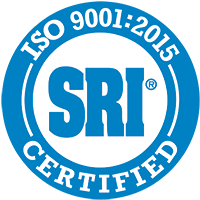P&P Industries has been a leader in the plastic injection molding industry for more than 50 years. Through continued technological advancements we have been able to produce innovative solutions to ensure your product’s success. As a leader in scientific injection molding, P&P has provided a decrease in scrap, cycle time, and field failures in production runs, creating better quality products for our customers. Scientific injection molding gives plastic processors the ability to detect where potential problems lie and document them with data, guaranteeing repeatable accuracy.
But when is scientific injection molding right for your project? P&P is here to share our expertise.
What is Scientific Molding?
Scientific injection molding helps processors gather actual values to build a robust molding process that will account for external variation of raw materials and equipment. This is different from plastic injection molding, which relies more on the experience of the plastic processor, meaning the result is less reliable and repeatable.
“Scientific molding is at the heart of what we do at P&P Industries,” says Kevin Morris, Sales Engineer at P&P. “Every part produced utilizes scientific molding principles. Scientific molding improves part quality, consistency, and efficiency of startup. These features are valuable to every part.”
In P&P’s scientific molding process, we identify every variable and document actual value. Through the utilization of this data, we can troubleshoot the process in the future. Throughout the entirety process, every decision made is backed by scientific data to increase efficiency, improve quality, and detect part failure earlier.
How Rigorous Mold Tryout (RMT) Benefits Your Part
At P&P, every mold (both new and transfer tooling) goes through a full Rigorous Mold Tryout, or RMT. This thorough, defined process allows us to confidently define the full bandwidth of a solid process the tool can repeat; we can then set our guidelines accordingly.
During the RMT trial, our team:
- Identifies a universal set up sheet to ensure parts are made with repeatable accuracy
- Develops our process work instructions
- Controls the process with actual readings of the output process
- Utilizes an eDART to confirm our molding machine is optimized
- Monitors the pressure for repeatability and early detection of quality issues with a transducer within the cavity
- Sees within the cavity during injection and holding to maintain ultimate quality
From the way P&P molds our products, to continuing to improve our processes, we make sure to use a scientific approach in everything we do.
When Scientific Molding is Best for Our Customers
A customer once approached P&P with a high-volume existing project they were struggling with at another molder. The project utilized three tools built by different toolmakers at different times, and the part was made different from all those tools; they were also often installed side-by-side, making the differences unacceptable. The team at P&P was able to run each tool through our RMT process and define the issues. We were then able to make modifications to both the tool and the process. The result was that all three tools were able to produce good parts that were identical in appearance.
P&P’s commitment to scientific molding is what makes us unique. Traditionally, plastic injection molding has relied heavily on individuals with considerable experience in the industry, meaning parts may not end up being created with repeatable accuracy. To proactively solve this issue, P&P has depended on scientific molding, which has allowed us to train and educate our workforce to properly troubleshoot whatever issues may arise.
Want to learn more about P&P’s scientific injection molding process? Let’s start a conversation on how we can help you.

